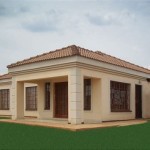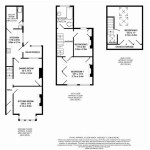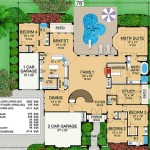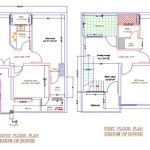Unveiling the Essence of Prairie House Plans: A Guide to Their Enduring Appeal
Prairie house plans have captivated home enthusiasts for generations, with their distinctive architectural style and enduring charm. This article delves into the essential aspects of Prairie House Plans, exploring the characteristics, history, and design principles that make them timeless and highly sought-after.
Architectural Features: A Symphony of Form and Function
Prairie house plans are renowned for their horizontal emphasis, low-pitched roofs, and deep overhangs. These elements pay homage to the vast, flat landscapes of the American Midwest, where they originated. The exteriors often feature natural materials such as wood, brick, and stone, creating a harmonious blend with their surroundings.
Historical Roots: A Legacy Inspired by Nature
Prairie house plans emerged in the late 19th century, largely influenced by the work of architect Frank Lloyd Wright. Wright believed in creating homes that were sympathetic to their environment, with open floor plans, ample natural light, and a seamless connection to the outdoors. The horizontality of the design was a nod to the prairie landscape, while the emphasis on natural materials reflected Wright's belief in organic architecture.
Design Principles: A Harmony of Lines and Spaces
Prairie house plans are characterized by their clean lines, geometric shapes, and emphasis on symmetry. The floor plans typically feature open and flowing spaces, with rooms connecting to each other in a logical and functional way. Large windows and doors allow for abundant natural light, creating a bright and airy atmosphere.
Interior Details: A Reflection of Craftsmanship
The interiors of Prairie houses often boast custom-built furniture, intricate woodwork, and handcrafted details. Natural materials such as wood and stone are incorporated throughout, creating a warm and inviting ambiance. The built-in elements, such as bookshelves, benches, and window seats, add to the overall sense of comfort and functionality.
Modern Interpretations: Embracing the Legacy
While Prairie house plans have evolved over the years, they continue to inspire contemporary architects and homeowners alike. Modern interpretations often incorporate elements of the original style, such as the horizontal emphasis and open floor plans, while also introducing modern amenities and materials. The result is a harmonious blend of tradition and innovation, catering to the needs of today's lifestyles.
Benefits and Considerations: A Timeless Choice
Prairie house plans offer numerous advantages, including their connection to nature, timeless aesthetic, and functional design. They provide ample space for both family and entertaining, making them ideal for a variety of lifestyles. However, it's important to consider factors such as maintenance costs, energy efficiency, and the availability of suitable building sites before embarking on a Prairie house project.
In conclusion, Prairie house plans continue to captivate homeowners with their distinctive architectural style, historical charm, and enduring design principles. By blending natural materials, clean lines, and open floor plans, they create homes that are both aesthetically pleasing and highly functional. Whether it's a classic original or a modern interpretation, Prairie houses remain a testament to the timeless beauty of architectural harmony.

Prairie House Plans Monster

Prairie Style House Plan 3 Beds 2 5 Baths 2175 Sq Ft 48 1044 Houseplans Com

House Plan 82604 Prairie Style With 2438 Sq Ft 3 Bed Bath

Grand Prairie House Plan Acadian

Southwest Style With 3 Bed 2 Bath Prairie House Small Plans Dream
Prairie Style House Plans

2 Story Prairie House Plan Dream Plans Contemporary Style Houses

Modern Prairie House Plan 1270 The Whispering Meadows 2544 Sqft 4 Beds 2 1 Baths

Prairie Style House Plans Floor Designs Houseplans Com

House Plan 97362 Prairie Style With 2081 Sq Ft 2 Bed Bath








